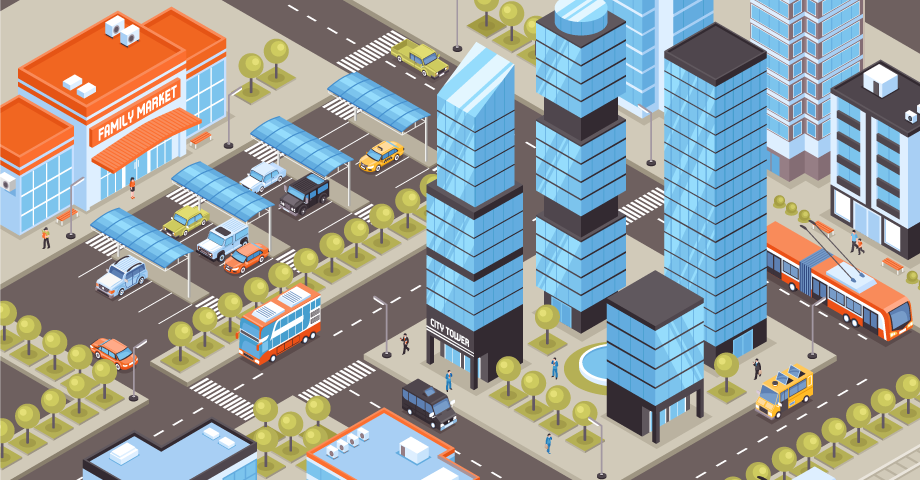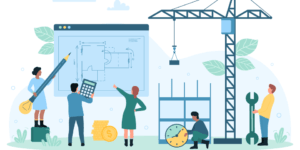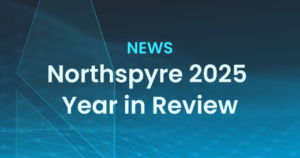Mixed-use developments, or properties combining multiple uses, such as residential, commercial, and office space, are an increasingly popular living option for city residents. Urban areas will continue to see mixed-use among new development, as the properties both help address housing shortages and meet consumer desire for a community-oriented, walkable lifestyle.
Developers willing to tackle the complexities of a mixed-use property, which often require additional effort in the planning stage or greater capital up front, will find the projects to have great rewards. In an uncertain economic climate, multi-use developments appeal to investors, diversifying income streams to ensure greater long-term earning potential and ROI. In addition, the projects put developers on the cutting edge of smart city and sustainable planning initiatives, positioning teams as innovators with industry longevity.
On the community level, urban planning goals align with mixed-use developments, potentially helping developers garner support from government stakeholders. Mixed-use projects have much to offer communities, increasing walkability for residents and providing convenient access to green space, public transportation, and grocery stores. Looking toward the future, mixed-use developments will remain valuable assets, offering residents diverse amenities, promoting sustainability, and fostering community,
Here’s why mixed-use developments are on the rise in communities across the globe, providing a positive economic, social, and environmental model for urban growth:
Benefits of Mixed-Use Development
Mixed-use developments benefit developers and city residents, providing development teams with a financial model that mitigates risk and creates vibrant, connected communities.
Here’s why mixed-use developments are on the rise: Convenience and Walkability
Walkable mixed-use neighborhoods provide pedestrian access to stores, restaurants, and other businesses without requiring the use of a car for transportation. In addition to promoting a healthy, active lifestyle for residents and convenient access to amenities, mixed-use neighborhoods also decrease car dependency, reducing air pollution and making areas more livable overall.
Economic Advantages
Investors are more likely to find mixed-use development appealing, as risk can be spread over several asset classes, allowing income streams to remain strong even as economic conditions change or if the real estate market enters a down cycle. For example, a crisis like COVID-19 might weaken demand for office space, but in a mixed-use development, retail and residential unit rents should remain strong. Local economic growth is also supported by mixed-use projects, increasing the number of jobs and supporting local businesses through increased foot traffic
Social and Community Benefits
Pedestrian-friendly environments promoted by mixed-use developments have social benefits, promoting social interactions between neighbors. Car dependency in cities can have a negative impact on physical and mental health, and urban areas with better walking, biking, and public transportation report better overall health outcomes. In a study conducted in San Francisco, three neighborhoods with different amounts of vehicle traffic were studied, and residents living in the neighborhood with the least cars reported having three times as many friends and twice as many acquaintances as the more heavily trafficked neighborhoods.
Sustainability and Environmental Impact
The EPA’s smart growth guidance outlines how development teams can mitigate environmental impact with new construction, and mixed-use developments are uniquely aligned with the agency’s recommendations, which include building compactly with green building techniques, reusing existing infrastructure, preserving green space, and putting homes, parks, jobs, and schools close to each other.
Reduced Carbon Emissions
Homes being in close proximity to jobs, retailers, and community centers increases walkability and decreases the need for cars. Buildings designed in a compact, multi-family model also have the potential to save energy costs on heating and cooling, emphasizing the power of green building models.
Green Building
Green buildings often deploy energy-efficient infrastructure, including a pneumatic-waste transport system, combined heat and power, and a greywater system, which recycles water from laundry, showers, and septic purposes for non-human uses such as landscaping. Buildings with green design also frequently have solar water heating, green roofs, rainwater collection systems, and other sustainable design features. Developers are incorporating these features into transit-oriented, multi-use developments, creating the “green districts” of urban living’s future.
Efficient Land Use
Reuse of existing infrastructure helps multi-use properties use land efficiently, taking advantage of the resources already available in a community and preventing urban sprawl. Many mixed-use development projects, such as Hudson Yards in New York City and Schuylkill Yards in Philadelphia, Pennsylvania, are transforming underutilized industrial space into community hubs.
Success Stories
Ambitious mixed-use development projects have seen success around the globe, revitalizing infrastructure and bringing diverse communities together. Most major cities have mixed-use projects underway, but a few development projects stand out in terms of showing a mixed-used area’s unique potential.
Hudson Yards, the biggest private real estate development project in United States history, rezoned the Western Railyard in Manhattan into a vibrant, transit-oriented, and pedestrian-friendly mixed-use district. The development is taking place over two time periods. In March of 2019, the first phase, The Eastern Yard, opened to the public with eight new buildings, including residential and skyscrapers, public gardens, a shopping mall, and the Shed cultural center. The second phase, The Western Yard, will include residential, office, and retail space and an elementary school.
Once completed, Hudson Yards will have 18 million gross feet of built space and 14 acres of additional public space. The site’s developers report the project will contribute $19 billion to New York City’s GDP, generate more than $500 million in tax revenue, and host more than 55,720 workers on a regular basis.
King’s Cross in London is another example of a successful mixed-use development, with developers converting and reusing industrial buildings to create offices, residences, hotels, community facilities, music venues, galleries, and more. Outdoor space is also included in the development, with over 26 acres of parks, squares, and open spaces open to the public. King’s Cross Central (KXC) is a brownfield site, or a formerly contaminated location due to past industrial use, and the ongoing revitalization continues to benefit and bring together residents in the United Kingdom.
The Center for Potsdamer Platz in Berlin, Germany, is a mixed-use development with office, retail, and residential units. Major construction to expand the development began in 2022, with investors looking to build new outdoor fitness areas and introduce a bicycle-focused concept. The new updates will include public art pieces, a boutique cinema, and increased mobile seating space for coworking. Developers hope the updates will make the space greener and more sustainable and encourage even more opportunities for the space to function as a community gathering place.
The successful mixed-use development projects above, though spanning the globe, all increase walkability, accessibility, sustainability, and social life for city inhabitants. Each required collaboration among various stakeholders, with private development teams working with government authorities, community representatives, environmental groups, and other local organizations to ensure the projects meet the community’s needs.
Future of Mixed-Use Development
The World Health Organization reports 70% percent of the global population will live in cities by 2050, and as dramatic urbanization continues, mixed-use projects are likely to dominate new real estate construction. Demand for multi-use development remained strong post-pandemic, as densifying cities continue to struggle with housing shortages and workplace flexibility remains desirable among residents.
Mixed-use development projects can be complex, requiring more construction time to complete, a larger number of stakeholders involved in the process, and additional upfront acquisition costs.
Modern real estate development software can help developers tackle the unique challenges seen on mixed-use projects, improving stakeholder communication and internal workflows to ensure a complex project can be completed on time and within budget.
Developers can use Northspyre’s platform to bolster critical communication, compiling key project data into a single dashboard and providing real-time project updates to all relevant stakeholders. Technology can also manage budgets and project schedules, helping prevent any overruns or delays amid an already intensive development process. Proactive warnings notify teams of any budget line overruns, contracts overspend, or other potential exposures, letting developers stay on schedule and under budget.
Mixed-use developments, which bring communities together, support sustainability, and boost economies, are likely to remain popular among developers. Project planning and zoning for a mixed-use project might be more complicated, but technology can help development teams tackle even the most ambitious multi-use projects.
Download our whitepaper on 4 Recession-Proof Asset Classes to learn more about development opportunities providing strong ROI no matter the economic conditions.



